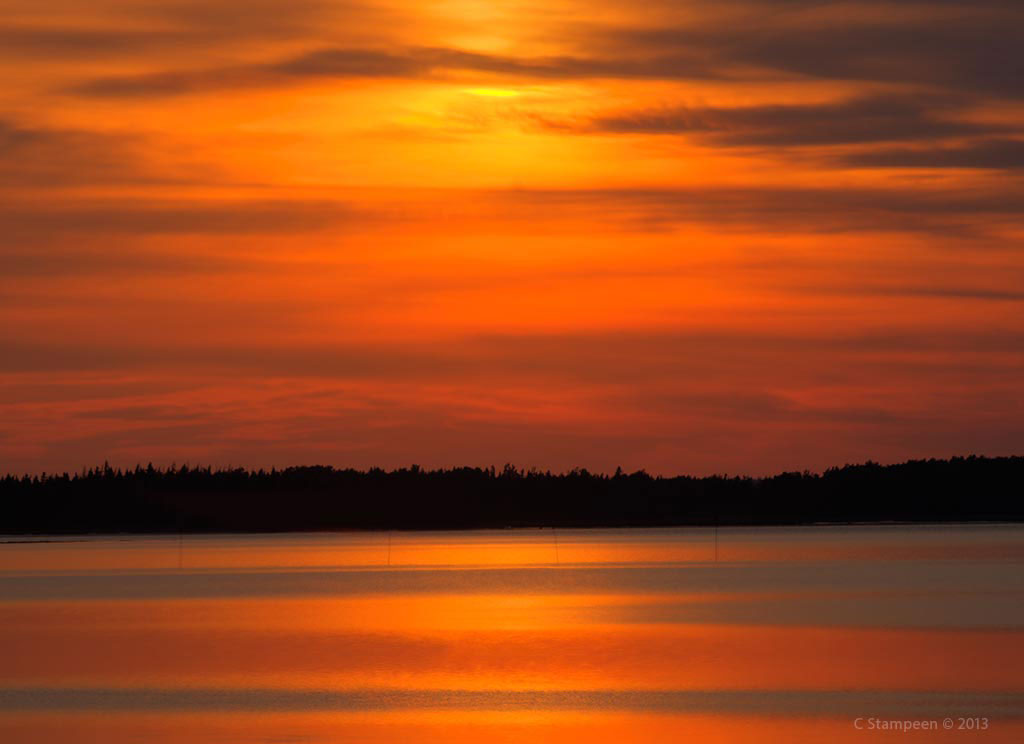A friend was over the other day and we talked about all sorts of things, one being the things on my iPad. While discussing his granddaughters I asked him if he had the Nighty Night app. He said no, so I showed him. He loved it as much as I do, then said I should be mentioning these sorts of things in my blog, as it’s difficult to know what to download and he likes many of my picks.
So…if you have a toddler and an iPad, Nighty Night is a beautiful storybook. There, said it. The artwork is gorgeous, the story very simple but adorable – the viewer goes through a scene putting different farm animals to sleep before putting themselves to sleep. The narrator’s voice is perfectly suited for this bedtime story. No to those who don’t know me well, I have no toddlers roaming about my feet. I do have a love for beautiful things, I love to see what others are doing with the media, so poke around now and then to see what’s new, saw this, loved the artwork on the app store enough to risk buying a children’s book and was immediately enchanted with it. I love having it on my iPad. It reminds me that simplicity and beauty are still things to cherish, no need to overcomplicate things.
To further appease my friend, the above image is one of my forays into tone-mapped HDRs. This is 7 images combined together. When shooting HDRs, one should keep in mind HDR means high dynamic range. If you shoot a scene, look at your histogram and see data all through the graph plus a drastic clipping off the edge, you have a scene that has a lighting range that exceeds your camera’s ability to capture all the data with one image. This is when HDR might be appropriate. HDR is a way of increasing the dynamic range of an image by taking multiple images at different exposures, then combining them together later into one, so you have detail in the darkest and brightest areas. Once you have your HDR image, you then tone-map it to bring out details where you want them.
When shooting for HDR, you want to shoot an exposure that shows detail in the darkest area (longest exposure), an exposure that shows the detail in the brightest parts of the image (fastest exposure), with at least one shot that is in the middle of the two. Taking more than 3 exposures may or may not be necessary, but it does allow for being more adaptable during the processing stage. You can choose to omit those exposures that don’t help you create the look you are envisioning – maybe one exposure causes colour fringing or is pulling the overall look in a non-pleasing direction.
Since you will be combining images, you want them to be able to line up as closely as possible. One of the most popular applications for processing HDR images is Photomatix, for good reason. Photomatix is pretty good at matching hand-held images, but nothing beats shooting on a tripod. If shooting hand-held, steady yourself as much as you can and consider shooting in burst mode to be as quick as possible.
With the above image, I wanted the shoreline to stay in dark silhouette since my focus was on the sunset colours, not the shoreline, and that detail would only be a distraction. I wanted the deep, rich tonal range of the oranges to be seen without the blown-out part where the sun is lying behind the clouds, which is why I shot HDR, and wanted to capture the shimmering silver on the water. Combining multiple images, from slow to fast shutter speeds, has the added benefit of flattening the water to enhance the silver effect on the water.
If the cloud cover had been thicker, so that the area in front of the sun wasn’t so much brighter than the rest of the scene, one shot might have been enough. It would have been a long exposure to flatten the water, as there was a wind that gave a bit of a choppy look to the water that made it not as attractive as it could have been. Fortunately, the clouds were very slow-moving, so while a long exposure would flatten out the wave motion, it wouldn’t blur the clouds too much.
In an ideal world, a heron wold have flown through the shot to provide some added interest, but at high tide, at this time of day, they were likely back roosting in their colony; gulls would have been off to the right, around the point. But maybe that would have distracted from the texture of the colours. I see printing this on metal at some point to see how that would interact with the silver part of the scene.

